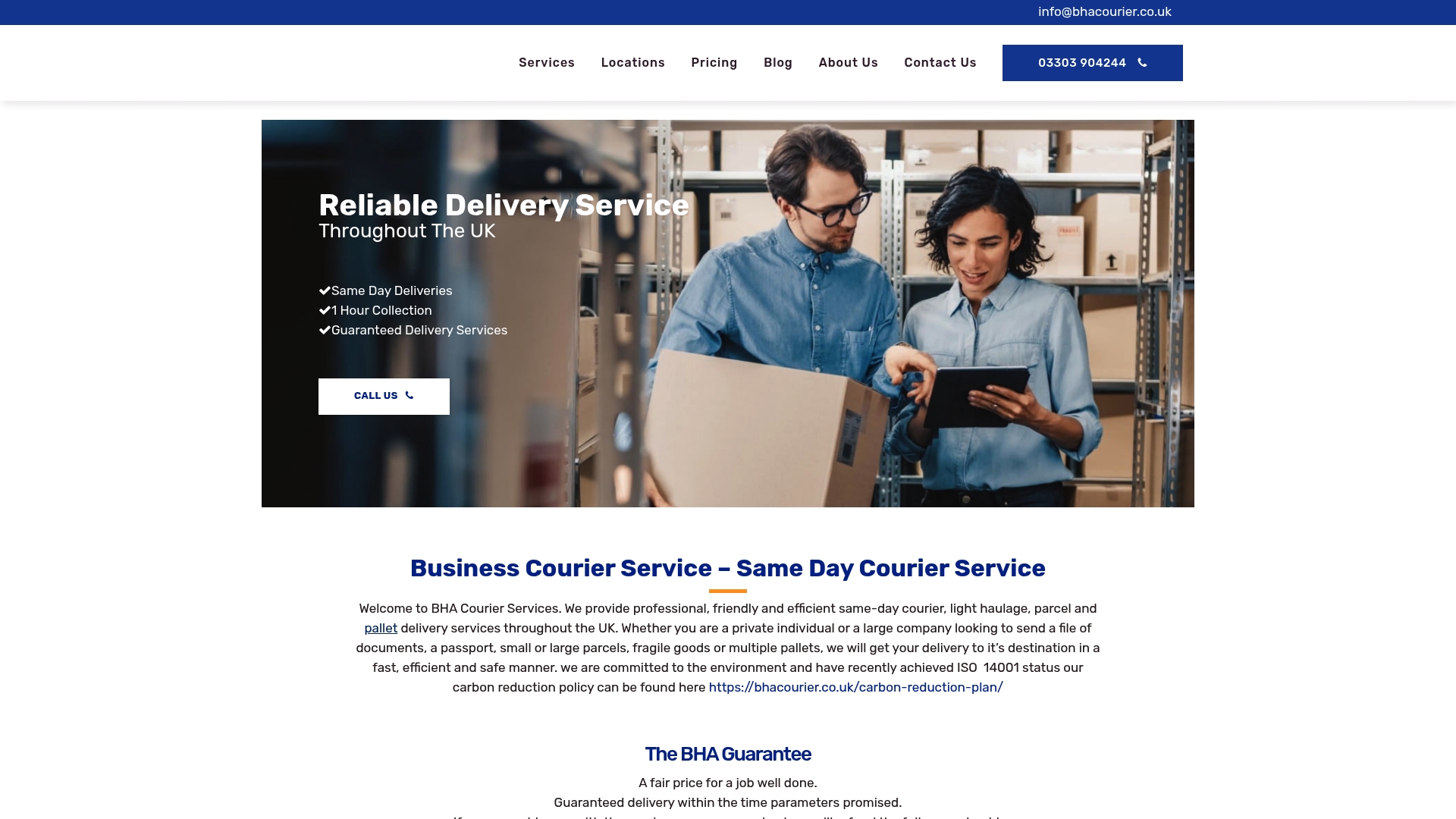
25 Aug Understanding Inventory Turnover Rates for Your Business
Inventory turnover rates often sound like dry accountancy jargon but they are the pulse of a thriving business. Firms that master this metric can see up to eight to ten full inventory cycles in a single year, smashing industry averages. Oddly enough, a high turnover is not always about making more sales. Sometimes it is the silent sign of smart purchasing and supply chain wizardry waiting to be discovered.
Table of Contents
- What Are Inventory Turnover Rates And How Are They Calculated?
- Why Inventory Turnover Rates Matter For Business Efficiency
- The Relationship Between Inventory Turnover Rates And Cash Flow
- Factors Influencing Inventory Turnover Rates And How To Interpret Them
- Real-World Examples Of Effective Inventory Turnover Management
Quick Summary
| Takeaway | Explanation |
|---|---|
| Higher turnover indicates better efficiency | A higher inventory turnover rate shows effective management, strong sales, and better resource utilisation. |
| Low turnover signals potential problems | A low inventory turnover can reflect overstocking, poor sales, or inefficient purchasing strategies in a business. |
| Track turnover for strategic decisions | Consistently analysing turnover rates helps identify supply chain issues, predict inventory needs, and adjust purchasing strategies. |
| Industry specifics influence turnover expectations | Different sectors have unique turnover benchmarks; understanding these nuances is essential for performance evaluation. |
| Effective management improves cash flow | Fast inventory turnover enhances cash flow, allowing businesses to reinvest capital and reduce financial strain. |
What Are Inventory Turnover Rates and How Are They Calculated?
Inventory turnover rates represent a critical financial metric that helps businesses understand how efficiently they manage and sell their inventory. At its core, this ratio measures the number of times a company sells and replaces its inventory during a specific period, typically a year.
Understanding the Inventory Turnover Ratio
The inventory turnover ratio is calculated by dividing the total cost of goods sold (COGS) by the average inventory value during a specific timeframe. This calculation provides businesses with a clear snapshot of their inventory management effectiveness. A higher turnover rate generally indicates:
- More efficient inventory management
- Stronger sales performance
- Better utilisation of company resources
- Reduced storage and holding costs
For example, if a business has £500,000 in annual sales and an average inventory value of £100,000, their inventory turnover rate would be 5. This means the entire inventory is sold and replaced five times throughout the year.
Why Inventory Turnover Rates Matter
According to research from the U.S. Department of Education, understanding inventory turnover is crucial for business profitability. A low turnover rate can signal potential issues such as:
- Overstocking
- Obsolete inventory
- Poor sales performance
- Inefficient purchasing strategies
Businesses across different sectors will have varying ideal turnover rates. Retail and fast-moving consumer goods typically aim for higher rates, while industries dealing with expensive, slow-moving items might have lower but still healthy turnover rates.
By consistently tracking and analysing inventory turnover rates, companies can make informed decisions about purchasing, sales strategies, and overall inventory management, ultimately improving their financial performance and operational efficiency.
Why Inventory Turnover Rates Matter for Business Efficiency
Inventory turnover rates are more than just a financial calculation. They serve as a critical diagnostic tool that reveals the heartbeat of a business’s operational performance, providing profound insights into how effectively a company manages its resources and responds to market demands.
Financial Health and Resource Allocation
According to the Corporate Finance Institute, inventory turnover is a key indicator of operational efficiency. High turnover rates signal strategic resource management, demonstrating a company’s ability to:
- Convert inventory into revenue quickly
- Minimise storage and holding costs
- Reduce capital tied up in unsold stock
- Improve overall cash flow
Businesses with optimal inventory turnover can rapidly adapt to market changes, reinvest profits, and maintain a lean, responsive operational model. For instance, a technology company with a high turnover rate can more quickly introduce new product lines and reduce the risk of obsolete inventory.
Strategic Decision Making and Risk Management
Inventory turnover rates provide crucial insights for strategic planning. By tracking these metrics, businesses can:
- Identify potential supply chain inefficiencies
- Predict future inventory needs
- Adjust purchasing strategies
- Benchmark performance against industry standards
A consistently low turnover rate might indicate deeper operational challenges such as overproduction, weak sales strategies, or misalignment with customer preferences. Conversely, an exceptionally high turnover could suggest potential stock shortages or missed sales opportunities.
Industry-Specific Implications
Each industry has unique inventory dynamics. Retail and fast-moving consumer goods sectors typically aim for higher turnover rates, while manufacturers of complex, high-value equipment might have naturally lower but still healthy turnover cycles. Understanding these nuanced differences is crucial for accurate performance evaluation.
By treating inventory turnover rates as a strategic management tool rather than a mere accounting metric, businesses can transform raw financial data into actionable intelligence, driving efficiency, profitability, and long-term sustainability.
To help clarify how inventory turnover rates affect core aspects of business performance, the following table summarises the financial and operational implications of high and low inventory turnover:
| Turnover Rate Type | Financial Implications | Operational Implications |
|---|---|---|
| High Turnover | Improved cash flow, reduced storage costs, faster capital reinvestment | Greater ability to respond to market changes, less risk of overstocking |
| Low Turnover | Tied-up capital, increased risk of obsolescence, higher holding costs | Potential supply chain issues, excess or obsolete inventory |
| Industry Differences | Varying benchmarks for ‘healthy’ turnover in different sectors | Requires industry-specific evaluation strategies |
This table allows readers to quickly compare the consequences of different inventory turnover scenarios and reinforces the article’s advice on interpreting turnover rates appropriately.
The Relationship Between Inventory Turnover Rates and Cash Flow
Cash flow and inventory turnover are intrinsically linked, forming a critical connection that can make or break a business’s financial health. Understanding this relationship enables companies to optimise their operational strategies and maintain robust financial performance.
How Inventory Turnover Impacts Liquidity
According to McKinsey & Company, inventory represents a significant portion of a company’s working capital. Faster inventory conversion directly translates to improved cash flow, allowing businesses to:
- Reduce money tied up in unsold stock
- Generate quicker revenue cycles
- Minimise storage and holding expenses
- Accelerate capital reinvestment
Consider a retail business with £500,000 in inventory. By improving its turnover rate from 3 to 5 times per year, the company can effectively free up capital more rapidly, enabling strategic investments and reducing financial strain.
Financial Risk and Inventory Management
Inefficient inventory management creates substantial financial risks. Slow-moving inventory acts like a financial anchor, consuming resources without generating returns. Businesses experiencing low turnover rates often encounter:
- Increased storage costs
- Higher risk of product obsolescence
- Reduced operational flexibility
- Potential cash flow constraints
A high inventory turnover rate signals operational efficiency, demonstrating a company’s ability to quickly convert stock into cash and respond dynamically to market demands.
Strategic Cash Flow Optimization
Proactive inventory management is key to maintaining healthy cash flow. By implementing sophisticated tracking systems and adopting just-in-time inventory strategies, businesses can:
- Align purchasing with actual sales trends
- Reduce excess stock
- Improve forecasting accuracy
- Enhance overall financial agility
Successful companies view inventory not as a static asset, but as a dynamic resource that directly influences financial performance. By maintaining an optimal balance between stock levels and sales velocity, organisations can transform inventory management from a potential liability into a strategic competitive advantage.
Factors Influencing Inventory Turnover Rates and How to Interpret Them
Inventory turnover rates are not static metrics but dynamic indicators that reflect complex interactions between multiple business variables. Understanding the nuanced factors that influence these rates is crucial for comprehensive financial management and strategic planning.
Market Demand and Sales Dynamics
According to the U.S. Small Business Administration, sales performance is the primary driver of inventory turnover. Businesses must carefully analyse factors that impact demand, including:
- Seasonal market fluctuations
- Consumer purchasing trends
- Economic conditions
- Product lifecycle stages
For example, a fashion retailer might experience dramatically different turnover rates between summer and winter collections, requiring adaptive inventory strategies that align with predictable market rhythms.
Operational Efficiency and Supply Chain Management
Internal operational factors significantly impact inventory turnover rates. Businesses can optimise their turnover by focusing on key operational elements:
- Procurement strategies
- Inventory tracking technologies
- Supplier relationship management
- Warehouse and logistics efficiency
Companies with streamlined supply chains and advanced inventory management systems can respond more quickly to market changes, maintaining higher and more consistent turnover rates across different product lines.
Industry-Specific Interpretation Strategies
There is no universal benchmark for ideal inventory turnover rates. Different industries inherently require distinct approaches to interpreting these metrics. Contextual understanding is paramount:
- Retail sectors typically aim for higher turnover rates (4-6 times annually)
- Manufacturing industries might have lower but stable turnover rates
- Luxury or specialised product markets often experience slower inventory movement
Successful businesses recognise that inventory turnover rates are diagnostic tools, not absolute performance indicators. By developing nuanced, industry-specific interpretation strategies, companies can transform raw data into actionable insights that drive continuous operational improvement and financial resilience.
Real-World Examples of Effective Inventory Turnover Management
Real-world case studies demonstrate how strategic inventory management can transform business performance. By examining successful approaches across different sectors, companies can glean valuable insights into optimising their own inventory turnover strategies.
Retail Sector Innovations
Learn more about efficient delivery strategies that support inventory management. Zara, the global fashion retailer, exemplifies exceptional inventory turnover management. Their approach includes:
- Rapid design and production cycles
- Minimal inventory holding times
- Frequent, small production batches
- Responsive supply chain design
Zara’s strategy allows them to turn inventory approximately 6-7 times per year, significantly higher than the industry average. By producing smaller quantities and responding quickly to market trends, they minimise excess stock and maximise revenue potential.
Technology and Manufacturing Strategies
Apple Inc. provides another compelling example of sophisticated inventory management. The technology giant maintains incredibly lean inventory practices by:
- Leveraging global supply chain networks
- Using precise demand forecasting
- Implementing just-in-time manufacturing
- Maintaining strong supplier relationships
Their approach enables them to turn inventory roughly 5 times annually, allowing rapid product iterations and minimising capital tied up in stock. This strategy has been crucial to their ability to maintain market leadership and financial flexibility.
E-commerce and Digital Transformation
Amazon represents a revolutionary approach to inventory management in the digital age. Their sophisticated predictive algorithms and distributed warehouse network enable:
- Anticipatory shipping models
- Localised inventory distribution
- Automated restocking processes
- Real-time inventory tracking
By integrating advanced technology with strategic warehouse placement, Amazon achieves exceptional inventory efficiency, frequently turning stock 8-10 times per year across different product categories. Their model demonstrates how digital transformation can fundamentally reshape traditional inventory management approaches.
The following table compares real-world examples of companies applying effective inventory turnover management strategies across different industries:
| Company | Sector | Key Management Strategies | Typical Inventory Turnover Rate |
|---|---|---|---|
| Zara | Retail | Rapid design cycles, small production batches, responsive supply chain | 6-7 times per year |
| Apple Inc. | Technology | Just-in-time manufacturing, global supply chain, precise forecasting | 5 times per year |
| Amazon | E-commerce | Predictive algorithms, automated restocking, localised distribution | 8-10 times per year |
This table provides concrete, industry-specific insights into inventory turnover best practices and expected performance benchmarks.
Unlock Faster Inventory Turnover with Reliable Same-Day Delivery
You already know that optimising your inventory turnover rates means freeing up capital, reducing storage costs, and improving your overall cash flow. Yet, delays in moving goods and uncertainty in delivery schedules can quickly stall this progress, leaving stock on your shelves and profits out of reach. Your business needs dependable support to keep sales cycles flowing and inventory agile.
Take control today by partnering with BHA Courier. Our same-day and next-day courier solutions are designed to safeguard your inventory targets and help you avoid costly bottlenecks. From rapid parcel delivery to light haulage and secure document transport, our nationwide service ensures your goods move when you need them to. Ready to keep your inventory working and boost your cash flow? Book your trusted courier service now to drive better efficiency and support your business growth.
Frequently Asked Questions
What is the inventory turnover rate?
The inventory turnover rate is a financial metric that measures how many times a company sells and replaces its inventory over a specific period, typically a year. It indicates how efficiently a business manages its inventory.
How is the inventory turnover ratio calculated?
The inventory turnover ratio is calculated by dividing the total cost of goods sold (COGS) by the average inventory value during a designated timeframe. For example, if COGS is £500,000 and the average inventory is £100,000, the turnover rate would be 5.
Why are high inventory turnover rates important for businesses?
High inventory turnover rates indicate effective inventory management, strong sales performance, and better resource utilisation. They also help reduce storage costs and minimise capital tied up in unsold stock, leading to improved cash flow.
What factors can influence the inventory turnover rate?
Several factors can influence the inventory turnover rate, including market demand, sales performance, operational efficiency, and supply chain dynamics. Seasonal fluctuations, consumer trends, and economic conditions also play significant roles.





